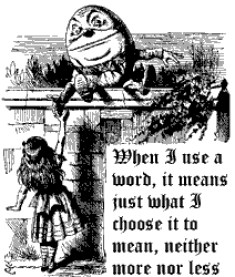
When describing characters’ travels, do you bear in mind the purpose of the trip? Is it business, pleasure, family, or personal? The trip’s purpose will of course affect their actions, but it also colors what they see and observe.
Think of a destination as a bare-bones stage set; what the writer adds can reinforce the drama and the character’s state of mind. To some extent, writers may do this almost unconsciously. If there’s danger, they might describe a cold wind, trash in the streets, streetlights blinking out. If there’s romance, they may provide beaches and outdoor cafes and bright colors.
So the ideas about what to describe in a place and how to describe it come from the place, from the character, and from the character’s purpose in being there. These descriptors need to be tightly connected to all three or they risk feeling arbitrary and superficial.
I try to move some of those unconscious—call them automatic—choices into the conscious realm, hoping to strengthen them and make sure I’m not sending mixed signals. My novel’s protagonist, Manhattan architect Archer Landis, travels to Brussels for work and to Tarifa, Spain, for powerful personal reasons. In Brussels, he was there to get a job done. But in Spain, he can’t escape the emotional reasons motivating his trip. As a result, a different set of details are highlighted. In Tarifa, food and street life and vistas are emphasized over the newspapers and briefcases and cabs of Brussels.
Tarifa is on the southwestern tip of Spain, and, amazingly, right across the Strait of Gibraltar, you can see Africa. When I was there myself and realized Tangier was only an hour away by hydrofoil, I had to go. Proximity to Morocco is one reason my characters ended up in that spot.
Despite having visited, I still had to study maps to remind myself of the broad strokes. From Google street views, I gained a sense of different neighborhoods that let me pick an area for my characters to stay in. I studied people’s photographs for details—whitewashed walls, narrow brick streets, potted red geraniums, wrought iron balconies. These were among the things an architect, like my character Landis, would notice. If he’d trained as a Navy Seal, the claustrophobic streets, the balcony shutters ajar, the low-rise, flat-roofed buildings would have had totally different significance.
Although I didn’t write a point-by-point description of the streets, I worked these elements into the action. For example, Landis naturally notices how the whitewashed buildings bring light into the narrow streets; at one frustrating point, he says he’s come to hate the geraniums’ aggressive cheerfulness.
One photograph I studied a long time was a rooftop view, akin to the one reproduced here. Staying in a hotel penthouse suite (sixth floor), Landis’s view would have been similar. Studying that view, he pulls together stray thoughts about the Pillars of Hercules (the nearby Rock of Gibraltar in Spain and the mountain Jebel Musa in Morocco, in thispicture, only slightly visible through the haze).

Hercules wasn’t in mind at all when I wrote my first draft, but I do a kind of “see where it leads me” research, and at some point I realized the myth’s potential metaphorical value in the story. As a result, Landis muses that the difficult task he’s set himself in Tarifa would be worthy of another of Hercules’s labors.
It’s a few simple words, but for those who know their Greek myths, I hope it has resonance. And, even for those of us (like me) who have forgotten so much, such associations still work, I think, at some subconscious level. On a business trip, that kind of wandering thought probably wouldn’t have a place.
Other posts in the Where Writers’ Ideas Come From series can be found under the Writers’ First Draft tab.
Photos: balcony, Akuppa John Wigham; rooftop view, Andrew Nash; both for Pixabay






 Author Rowan Hisayo Buchanan asks an intriguing question about perception in her recent Catapult article, “Is the Green You See, the Green I See?” The answer to that one is “probably not,” given the 2015 social media uproar over the question “
Author Rowan Hisayo Buchanan asks an intriguing question about perception in her recent Catapult article, “Is the Green You See, the Green I See?” The answer to that one is “probably not,” given the 2015 social media uproar over the question “



 One helpful resource ought to be the Corpus of Founding Era American English, based on some 100 million words of text from 1760 to 1799 from various sources. (See how
One helpful resource ought to be the Corpus of Founding Era American English, based on some 100 million words of text from 1760 to 1799 from various sources. (See how 




 By Mary Norris – This book—part history of language, part grammarians’ bible, part punctilious punctuation-snob puncturer—by a veteran New Yorker copy editor attempts to explain why writers in English, particularly those whose work appears in The New Yorker, make the choices they do. Form, not content, is her subject. While that publication is notoriously picky about copy matters, Norris’s anecdote-rich text suggests how much elasticity actually exists within its seemingly constricting rules.
By Mary Norris – This book—part history of language, part grammarians’ bible, part punctilious punctuation-snob puncturer—by a veteran New Yorker copy editor attempts to explain why writers in English, particularly those whose work appears in The New Yorker, make the choices they do. Form, not content, is her subject. While that publication is notoriously picky about copy matters, Norris’s anecdote-rich text suggests how much elasticity actually exists within its seemingly constricting rules.